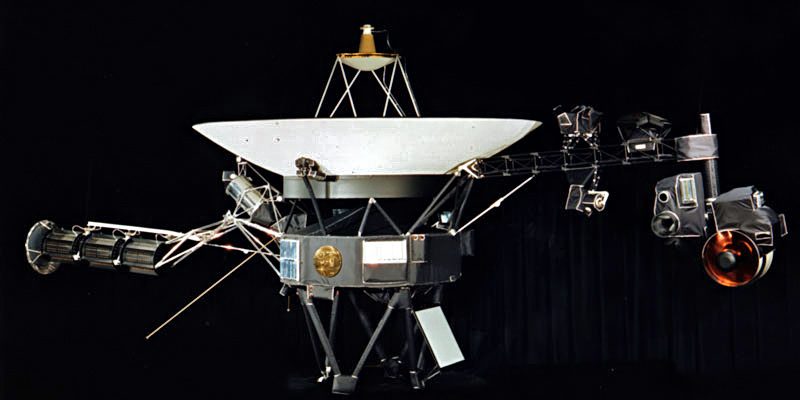What information did the probes discover? To travel ?
Patrice Francoeur
Voyager 1 And 2 were the first to study the satellites of the giant planets and exit a section of our solar system called the heliopause.
“I would say the most striking was the observation of volcanism on the moons of the giant planets, which was unexpected,” says Linda Spilker, chief scientist of the Voyager program at NASA. “The exit from the heliopause, the zone influenced by the solar wind rather than the interstellar wind, was also much later than expected. »
Marc Jobin, astronomer at the Planetarium, also spontaneously mentions the volcanism of the moons of giant planets, as well as the exit from the heliopause as the major contributions of the Voyager program.
Mme Spilker notes that Voyager 2 is until now the only probe to have flown past Neptune and Uranus.
We discovered the anomaly of the magnetic axis of Uranus, which we still cannot completely explain.
Linda Spilker, chief scientist of the Voyager program at NASA
She also took the only photo of a geyser rising 8 km above Neptune’s satellite Triton, coming from an underground ocean.
Half a century of photos
-

PHOTO FROM NASA WEBSITE
The two probes To travel photographed Jupiter in 1979, at distances of 277,000 and 650,000 km. Here, the big red spot.
-

PHOTO FROM NASA WEBSITE
The two probes To travel photographed Saturn in 1980 and 1981, at distances of 41,000 km and 64,000 km.
-

PHOTO FROM NASA WEBSITE
Voyager 2 passed 81,000 km from Uranus’ atmosphere in 1986.
-

PHOTO FROM NASA WEBSITE
In 1989, Voyager 2 passed 5000 km from Neptune’s atmosphere.
-

PHOTO FROM NASA WEBSITE
A golden disk carried by each of the two probes To travel contains images and sounds of life on earth.
-

PHOTO FROM NASA WEBSITE
Jupiter and its moons Io and Europa sketched by Voyager 1
-

PHOTO FROM NASA WEBSITE
Respondents To travel revealed that Jupiter had rings.
-

PHOTO FROM NASA WEBSITE
Two volcanoes on Jupiter’s moon Io sketched by Voyager 1
-

PHOTO FROM NASA WEBSITE
The icy surface of Saturn’s moon Enceladus revealed by Voyager 2
1/9
Launched in 1977, the two probes To travel left the solar system in 2012 and 2018. The probes Pioneer 10 And Pioneer 11, launched in 1972 and 1973, have also left the solar system, and it has not been possible to communicate with them for more than 20 years. The mission of Voyager 2, which was supposed to last five years, has just been extended until 2026 by eliminating a surge protection system that requires power. That of Voyager 1 should also benefit from this arrangement in 2024, when it will be located too far away for current systems to be sufficiently powered.
“We believe that the probes To travel will be able to continue sending scientific data until the 2030s,” says Mme Spilker, who began his career on Voyager in the 1970s, before moving to the Cassini program. ” The probe Cassini flew over Titan [une lune de Saturne] because Voyager 1 had not been able to penetrate its atmosphere, which intrigued us. » Voyager 1 could not fly past Neptune and Uranus, as Voyager 2because of his detour through Titan.
Respondents Cassini And Galileo also emerged in part because of observations of Jupiter by the Voyager program, which discovered rings not visible from Earth, like those of Saturn. Voyager 2 also found rings around Uranus, note Mme Spilker.
Both To travel will they provide important data in the coming years? “The influence of the solar wind lasts longer than expected after the heliopause,” says Mme Spilker. We expect to see the point where there will be changes in magnetism, when the interstellar wind will predominate. »
Learn more
-
- 24 billion kilometers
- Distance from Earth Voyager 1 in mid-January
SOURCE: NASA
- 20 billion kilometers
- Distance from Earth Voyager 2 in mid-January
SOURCE: NASA
